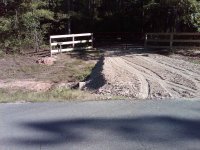Who can help me with this question? Brewed my first batch 6 days ago (Bass Ale clone using dried Safeale yeast packet which I sprinkled on the top of the wort after cooling to 75 degrees). After a day I observed vigoruous bubbling activity through the air lock. Went to take a gravity reading today and found big mounds of globby yeast floating on the surface. But otherwise the brew below the floating yeast looked and smelled fine (good actually). Gravity reading was 1.012. OG was 1.044.
When I pitched the yeast, I specifically did not stir the yeast into the wort (just sprinkled it on top as the instructions said). And now, that's were all the yeast appears to be. Should I have stirred the yeast in? Did the yeast finish its job? Will the yeast eventually settle and if so when might that be? If not, can I bottle the beer from below the surface or strain out the floating yeast?
Thanks,
Gary
When I pitched the yeast, I specifically did not stir the yeast into the wort (just sprinkled it on top as the instructions said). And now, that's were all the yeast appears to be. Should I have stirred the yeast in? Did the yeast finish its job? Will the yeast eventually settle and if so when might that be? If not, can I bottle the beer from below the surface or strain out the floating yeast?
Thanks,
Gary


